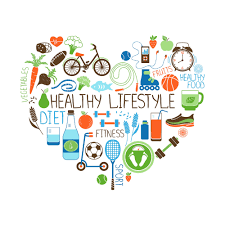Everything You Need to Know About Heart Disease (HEALTY LIFESTYLE)
- Healty Lifestyle

- Sep 27, 2022
- 2 min read
Heart disease is the leading cause of death in the United States, according to the Centers for Disease Control and Prevention (CDC)Trusted Source. In the United States, 1 in every 4 deaths in is the result of a heart disease. That’s about 610,000 people who die from the condition each year.
Heart disease doesn’t discriminate. It’s the leading cause of death for several populations, including white people, Hispanics, and Black people. Almost half of Americans are at risk for heart disease, and the numbers are rising. Learn more about the increase in heart disease rates.
While heart disease can be deadly, it’s also preventable in most people. By adopting healthy lifestyle habits early, you can potentially live longer with a healthier heart.
Heart disease encompasses a wide range of cardiovascular problems. Several diseases and conditions fall under the umbrella of heart disease. Types of heart disease include:
Arrhythmia. An arrhythmia is a heart rhythm abnormality.
Atherosclerosis. Atherosclerosis is a hardening of the arteries.
Cardiomyopathy. This condition causes the heart’s muscles to harden or grow weak.
Congenital heart defects. Congenital heart defects are heart irregularities that are present at birth.
Coronary artery disease (CAD). CAD is caused by the buildup of plaque in the heart’s arteries. It’s sometimes called ischemic heart disease.
Heart infections. Heart infections may be caused by bacteria, viruses, or parasites.
The term cardiovascular disease may be used to refer to heart conditions that specifically affect the blood vessels.
What are the symptoms of heart disease?
Different types of heart disease may result in a variety of different symptoms.
Arrhythmias
Arrhythmias are abnormal heart rhythms. The symptoms you experience may depend on the type of arrhythmia you have — heartbeats that are too fast or too slow. Symptoms of an arrhythmia include:
lightheadedness
fluttering heart or racing heartbeat
slow pulse
fainting spells
dizziness
chest pain
Atherosclerosis
Atherosclerosis reduces blood supply to your extremities. In addition to chest pain and shortness of breath, symptoms of atherosclerosis include:
coldness, especially in the limbs
numbness, especially in the limbs
unusual or unexplained pain
weakness in your legs and arms
Congenital heart defects
Congenital heart defects are heart problems that develop when a fetus is growing. Some heart defects are never diagnosed. Others may be found when they cause symptoms, such as:
blue-tinged skin
swelling of the extremities
shortness of breath or difficulty breathing
fatigue and low energy
irregular heart rhythm
Coronary artery disease (CAD)
CAD is plaque buildup in the arteries that move oxygen-rich blood through the heart and lungs. Symptoms of CAD include:
chest pain or discomfort
a feeling of pressure or squeezing in the chest
shortness of breath
nausea
feelings of indigestion or gas
Cardiomyopathy
Cardiomyopathy is a disease that causes the muscles of the heart to grow larger and turn rigid, thick, or weak. Symptoms of this condition include:
fatigue
bloating
swollen legs, especially ankles and feet
shortness of breath
pounding or rapid pulse
Heart infections
The term heart infection may be used to describe conditions such as endocarditis or myocarditis. Symptoms of a heart infection include:
chest pain
chest congestion or coughing
fever
chills
skin rash















Comments